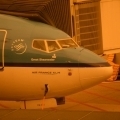
-
Content Count
445 -
Donations
$0.00 -
Joined
-
Last visited
Community Reputation
354 ExcellentAbout Daube
-
Rank
Member
Profile Information
-
Gender
Male
Flight Sim Profile
-
Commercial Member
No
-
Online Flight Organization Membership
none
-
Virtual Airlines
No
Recent Profile Visitors
1,575 profile views
-

Almost Seduced by the "Dark Side"
Daube replied to thepitts's topic in The X-Plane General Discussions Forum
There is no Dark Side. PS: we have cookies 🙂 -

IniBuilds Beluga and A400M announced for MSFS 2024
Daube replied to abrams_tank's topic in Microsoft Flight Simulator (2020)
So this means it's not the A400M from Roland Laborie that was shown in the MSFS2024... I'm glad for Inibuild having success, but I wish other devs such as Roland would get a slice of the cake as well... His A400M, after the recent updates, is quite nice already in MSFS. -
Regarding the difference of perceived world scale between MSFS and XPlane, beside the IPD concept I mentioned above, I would guess the autogen objects, especially the trees (trees height in particular) are probably playing a major role here. I remember, back in the FS9/FSX days, when a freeware addon appeared to replace the tree textures by two or three smaller trees. At that time, I was still flying in 2D, VR wasn't available yet. But I remember clearly how this addon drastically changed my perception of distances and general scale in the sim. Trees are most likely a kind of reference point that we use to understand scale and distances. The different appearance and sizes of the trees in MSFS and XPlane are, I believe, one of the main reasons for the scale difference you perceive.
-
There might be several things at play to impact your impression of distances/scale. However, I would recommend you to avoid using the "World Scale" option in MSFS as it's just a percentage and you have no precise way to understand which value is correct. You would have to adjust again and again until it "feels" right to you, which is not ideal. From my side, I don't want values that "feel" right. I want values that "are" right. I want the scale to be 1:1. And from my understanding, in order to get a correct scale, you need to have the right and left ingame camera set to the same distance as your physical IPD. OXRTK lets you do that, since the setting in there actually shows as millimeters. I have modified the value to match my IPD (in addition to the physical adjustment in the headset itself) and now the world scale looks good to me, both in the cockpit and outside.
-
I'm not sure which part of the real world atmospherics is not being supported in MSFS ? Also, PMDG did release the 737's already, so I don't think they are still seeing any issues in producing a 747. This might have been true in the early days of that sim, but from the moment they released the first 737, there were no more issues, were there ? Are you trying to imply that MSFS is only good for Sci-Fi addons, and the fact that these exist is a proof that "it's a game, not a sim" ? Come on, you're either too old or not old enough for such non-sense.
-
Yes if you restrict yourself to only a PMDG aircraft, and only actual real world routes, then you don't really care about the surrounding sceneries and you can fly them correctly both in P3D or in MSFS.
-
Yes, but we were talking about sceneries. It would be nice to stop the kind of comments that try to make MSFS users look like brainless kids.
-
Fortunately for the addon scenery makers, not everybody uses his sim like you. Many of us fly many kind of airplanes, VFR, IFR, military, small or medium airplanes, helicopters, etc... For 747 pilots who don't look out of the window, the major airports in the world is a very limited set indeed, and duplication of the most popular ones happens of course. But when it comes to the sceneries for all the other kind of pilots out there, the possibilities are much, much wider. So contrary to what you wrote in your earlier post, the scenery developers won't have any issues "in a few years" at all.
-
In a lot of years then... The thing is, the product range in MSFS is way wider than what P3D could offer. This is for a very simple reason: in P3D, very few countries are really "detailed" in such a way that you would want to venture anywhere else than in a major airport. So for such a "not-detailed" country, the market is limited to major/international airports for the liners pilots. In MSFS you get that as well, plus all the smaller airports in the country because there's actually some interest to explore everywhere. I think this principle is well illustrated by OrbX: once they produced a "Regional" or a "TrueEarth" area of the globe, they could start to propose smaller airports dedicated to GA pilots for that area. On a smaller scale, they could also start selling some products for the areas of the globe that were covered by their lighter landclass products, such as Global. Now, if we make the comparison with MSFS, it's a bit like the whole planet is already covered by TrueEarth, so as a scenery creator, you can technically product any airport/airfield anywhere on the planet, in any country. It will take a while before the market gets saturated, really.
-
P3Dv6 has been released less than a year ago. I don't think there are any "rumors" about it yet. We were all hoping for a new graphic engine for v6, and it didn't happen. I don't think LM will produce a new version of v7 so soon. Finally, about the addon makers, I don't really like the comments that make them sound like they left the market. It's not the devs who left, it's the customers. We shouldn't forget that, nor try to make it look the other way around.
-

This is getting insanely realistic!
Daube replied to GoranM's topic in The X-Plane General Discussions Forum
Sorry, I think I asked already in the past: Does VisualXP work in VR ? -
Let's be clear: we're only talking about photoscenery which has autogen on it. Photoscenery without autogen is, to me, completely unwatchable.
-

OpenXR Toolkit needed?
Daube replied to vonduck's topic in Virtual Reality (VR) for Microsoft Flight Simulator (2020)
It's simple: for example, if your real eyes are 65mm away from each other, but the right and left cameras are only 60mm away from each other, you'll get wrong scale for the world in the sim. Everything will appear too big or too small, and too far or too close, or something like that. Both have to match, if you want to see things at the correct 1:1 scale in the sim. At least that's my understanding of stereoscopic vision. -

Can you see the difference between 30fps and 60fps?
Daube replied to kevinfirth's topic in Microsoft Flight Simulator (2020)
Why ? There's no debate, really 😉 The difference is clearly visible, in simulator or FPS games. The test with just flickering light is a bit strange I think. A moving (but not blurred) picture would be much more relevant. -
The regions are only worth it where TrueEarth sceneries are not available. I would never recommend OrbX PNW region, but instead I would recommend Orbx True Earth Washington. In the same way, I would never recommend OrbX EU England region, but instead I would recommend Orbx True Earth England North + Central + South. But for the places where there is only an Orbx Regional scenery and not True Earth scenery, then I would totally recommend the Regional addon 🙂






